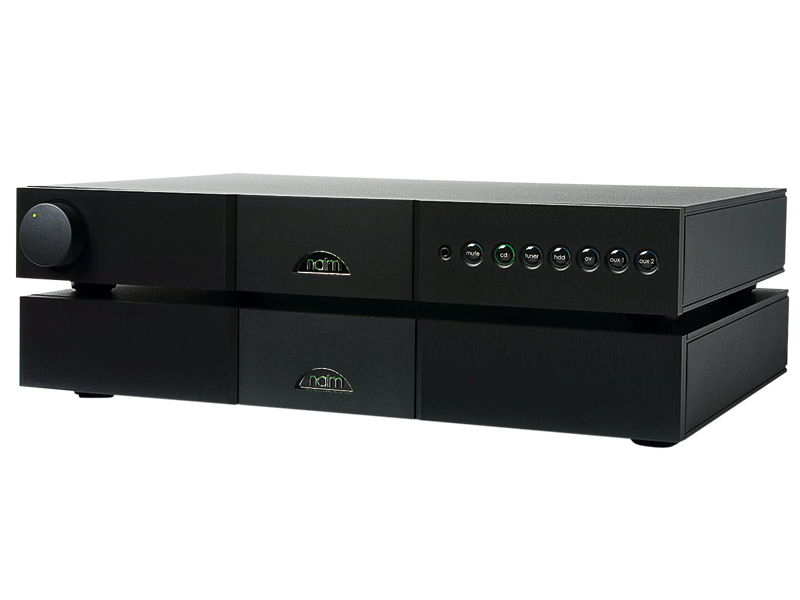TechRadar Verdict
An excellent performing, keenly priced and well built duo that possess the classic Naim virtues whilst adding features and a helping of compatibility that should win it friends with a new audience
Pros
- +
Excellent detail
- +
Superb timing
- +
Comprehensive connectivity
- +
Realistic tonality
- +
Control over most loudspeakers
Cons
- -
The 152 sounds better through DIN than phono connections
- -
The 155 suffers from limited connectivity and a limit to soundstaging
Why you can trust TechRadar
Naim has made its products more accommodating to work in mixed component systems, and the NAC 152 XS and NAP 155 XS are perfect examples of this new design focus.
The DiN connections were joined by conventional RCA phono plugs some years ago and 2007 saw the release of the Supernait, which added digital inputs – a feature that actively encouraged the use of non-Naim components.
This was followed by the Nait XS, which borrowed heavily from the amplification of the Supernait (less the digital inputs) and earned our praise.
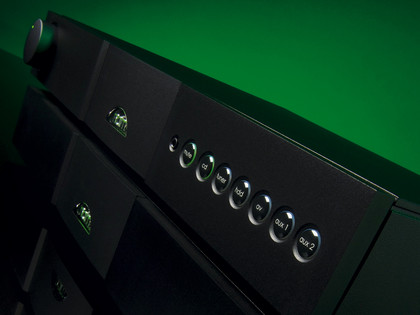
Now we are greeted with the NAC 152 XS preamp and NAP 155 XS power amp, which share the design philosophy of the two Naits but are split into Naim's preferred two-box solution.
These replace the earlier NAC 122x and NAP 150x and are part of the new XS range of components that Naim are bringing to market.
Visually, the 152 and 155 are the first "slimline" Naim boxes to sport the brushed, anodized, black aluminium fascia of the more costly Naim units. The fit and finish of the two boxes is truly excellent and belies their relatively modest price.
Internally, both units make use of the new bayonet type PCB fitting for critical boards. This is a system that attempts to achieve some of the isolation of the flagship Naim component – where the boards are elegant floating brass affairs – at a more realistic price point.
This is one of the measures that Naim has taken in its characteristic approach to reducing vibration. Other features such as the decoupled connectors and thick, non-resonant chassis are all present and correct.
The NAC 152 XS preamp is equipped with six line level inputs, four of which support either DiN or RCA connections, one being shared between RCA and a front 3.5mm input for MP3 duties and a powered DiN input for a Naim phono stage.
Like the Nait XS, there is also an AV bypass feature that allows the 152 to connect to the pre-out of an AV receiver and handle the stereo duties of an AV system with its own volume control knocked out of the circuit. In addition, the 152 can be upgraded to full control over RS232 if you wanted to integrate it into a custom install system.
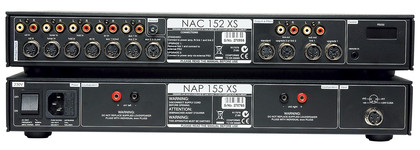
There are three outputs – two RCA (one is listed for subwoofer purposes) and one DiN output. One socket conspicuous by its absence is a mains input, the 152 being powered either by DiN connection to a Naim power amp or by upgrading to the flatcap XS power supply. A Naim system driving remote is supplied.
The 155 is, by comparison, simplicity itself. Offering the same 60 watts output into eight ohms and 90 watts into four ohms that the Nait XS does, it uses a larger transformer which should endow it with better handling of tricky speakers, although the integrated is no slouch in this regard.
The rear panel has left and right channel outputs that use four millimetre sockets and a single DiN connection to provide power and signal to the preamp. It has exactly the same compact dimensions as the 152, so accommodating the pair of them should not prove too challenging.
Sound quality
The two units were tested as a pair but were used outside of a full Naim system environment with a view to seeing how well they would perform outside of the fold. There is a strong likelihood that anyone spending a whisker under two thousand pounds upgrading to this combination would have to use it with their existing components for some time before potentially moving on. We thought it would be interesting to see what this would be like.
Unusually, we found that the warm-up time of the 152 and 155 even quicker than the Nait XS, which we felt was pretty rapid. After a few hours, the two boxes started giving strong indicators of what they were capable of and further improvements were gained the longer the units were running.
The first impressions of the pairing were very positive. Goldfrapp's Felt Mountain was delivered with confidence and assurance. The ample bass of the recording is beautifully recreated with all of the detail and timing that is required to show the work at it best. Goldfrapp's vocals are placed perfectly in relation to the sparse instrumentation and electronic effects.
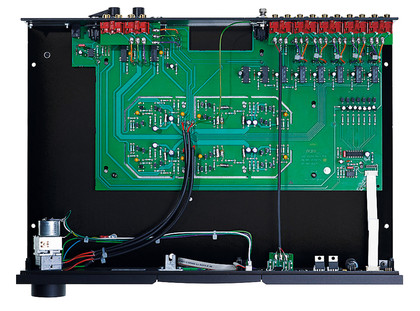
SHORT SHIFT: The Naim's short signal path design is evident at the top right of the new mainboard
There is more of a sense of soundstaging than with some older Naim designs – vocals leave the confines of a speaker and where appropriate, are centralised with instruments being placed sensibly in relation to them. The effect is not the 'holographic' soundstage sometimes possessed by valve amps, but it provides believable placement to musicians and makes sense of what is going on.
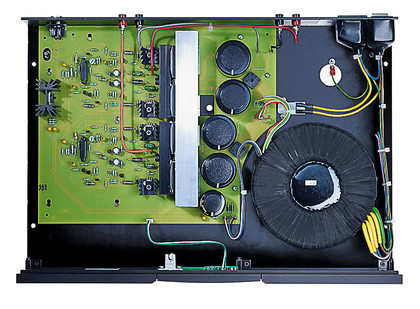
ROOMY: On the left, transistor 'rooms' offer better thermal tracking, while the 400 va transformer dominates the right
Tonality from the pairing is especially good. Regina Spektor's Mary Anne meet the Gravediggers is filled with simple piano and bass pieces and the Naim duo reproduced these with almost startling realism with the decay of individual notes being tangibly real and adding hugely to the sense that the performance is being reproduced accurately. Larger and more complicated orchestral pieces retained this accuracy and managed the task of relaying this detail without losing the cohesion of the work.
In the course of listening, the pair were given an enormous range of voices both solo and group to handle and at no stage did their standards of realism and detail slip. In absolute terms, there is the slight sensation that the very top end is slightly rolled off, but this only really becomes apparent next to equipment that is considerably more expensive.
Above all, however, the simple propulsive force of the pairing becomes addictive. Their reproduction of orbital's The Altogether was as fast and dynamic as we could reasonably wish for and anything which requires some timing and attack to it is unlikely to be handled better by any remotely price comparative equipment. The fact that this pace and timing – a long time Naim trademark – is not achieved at the expense of their ability to replay more delicate music is, perhaps, their most singular achievement.
The NAC 152 XS and NAP 155 XS impressed from the outset and continued to win praise from there onwards. Whilst they would undoubtedly shine when partnered with the forthcoming source material from the XS range, they demonstrated beyond any doubt that they can happily be installed outside of a full Naim system and provide a thoroughly satisfying musical performance.
When their excellent build, extensive feature set and useful upgrade options are also taken into account we have little difficulty in recommending them.
Follow TechRadar Reviews on Twitter: http://twitter.com/techradarreview

Ed Selley is a freelance writer who has been playing around with audio equipment – be it selling, supporting, marketing, installing or writing about it – for over 20 years. He worked with a variety of manufacturers before moving into reviewing over a decade ago and now writes about every category of equipment he can get his hands on. He owns more record players than any one human being strictly needs and an obsessively alphabetised record collection to use on it.
